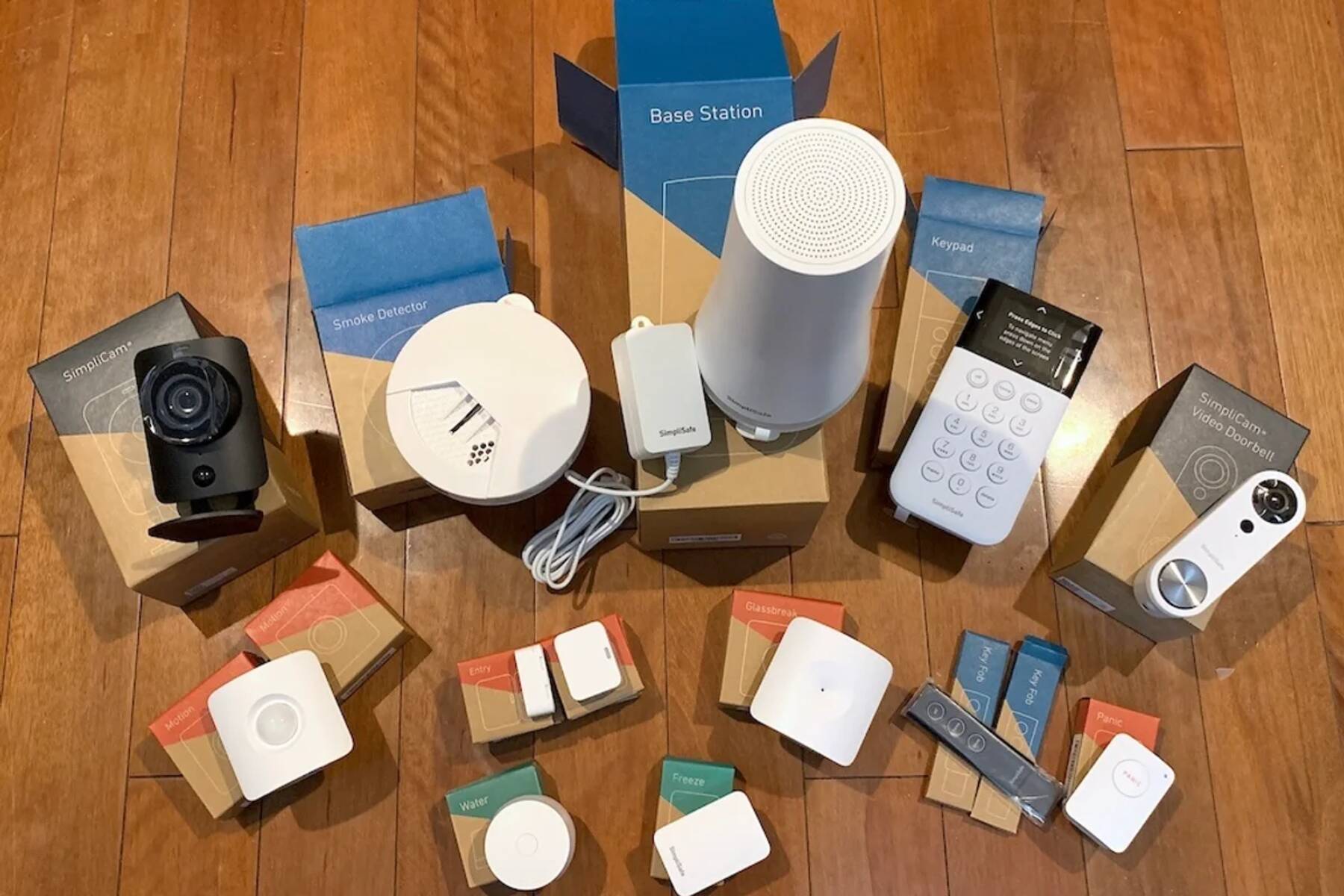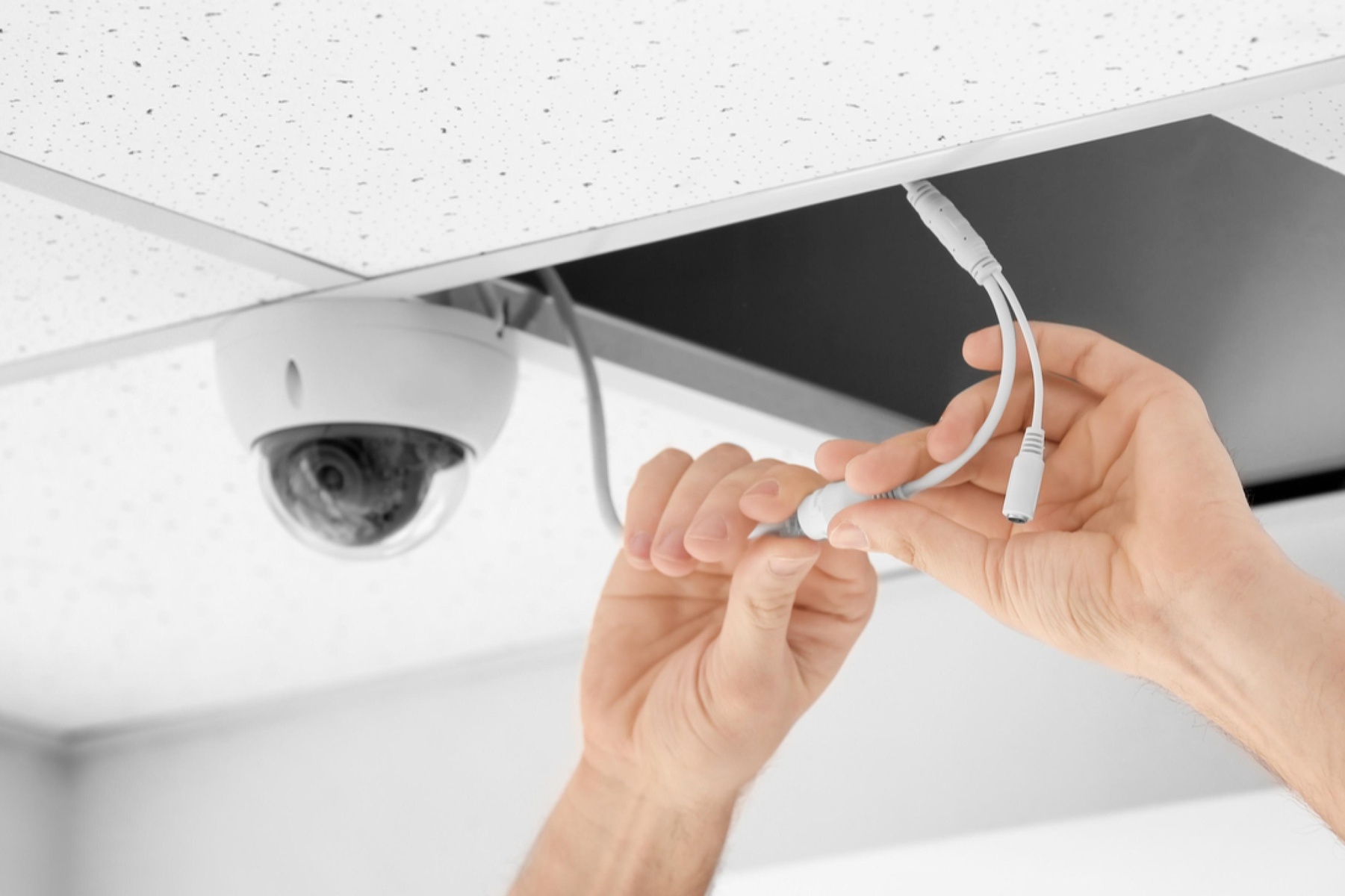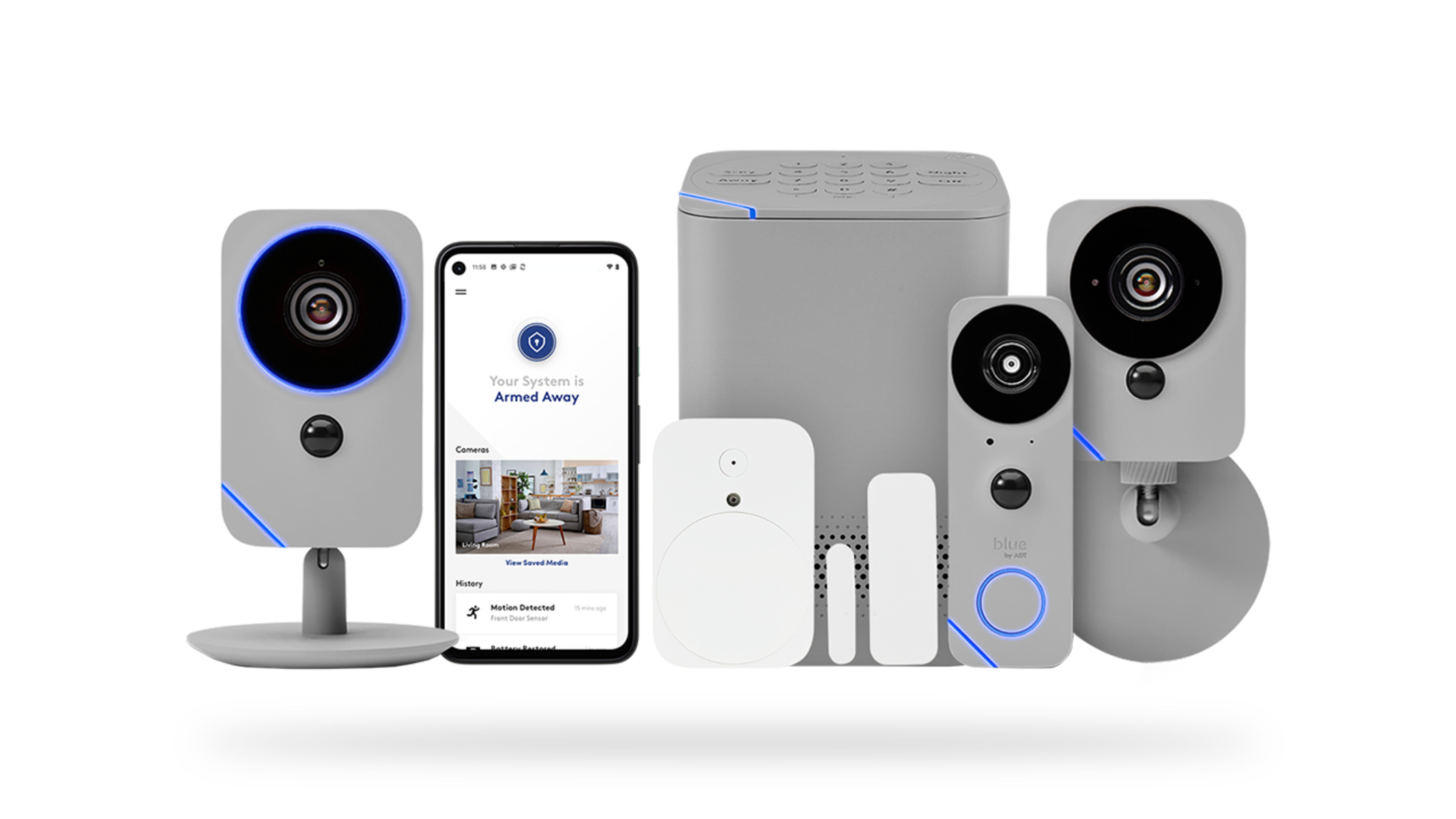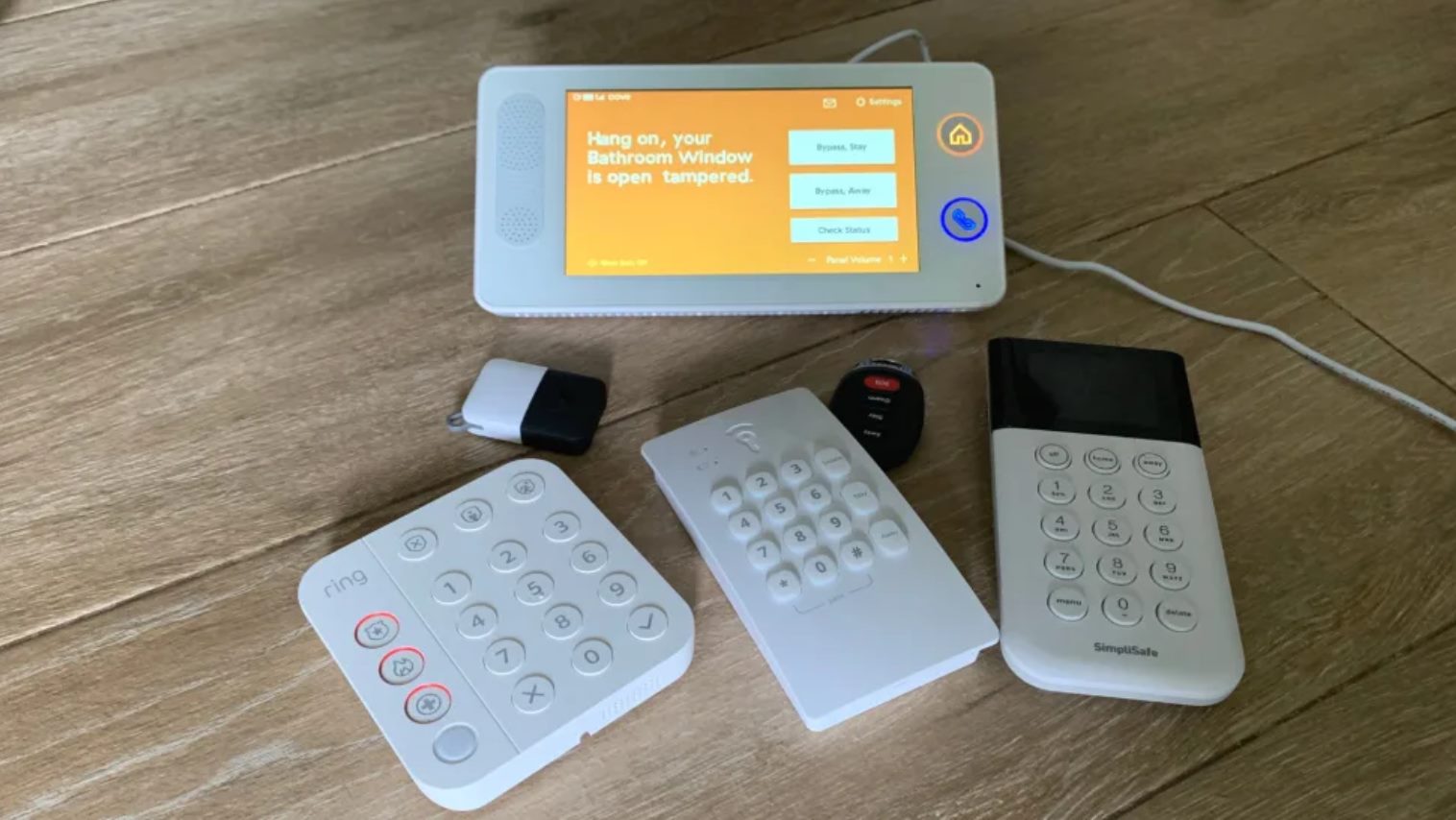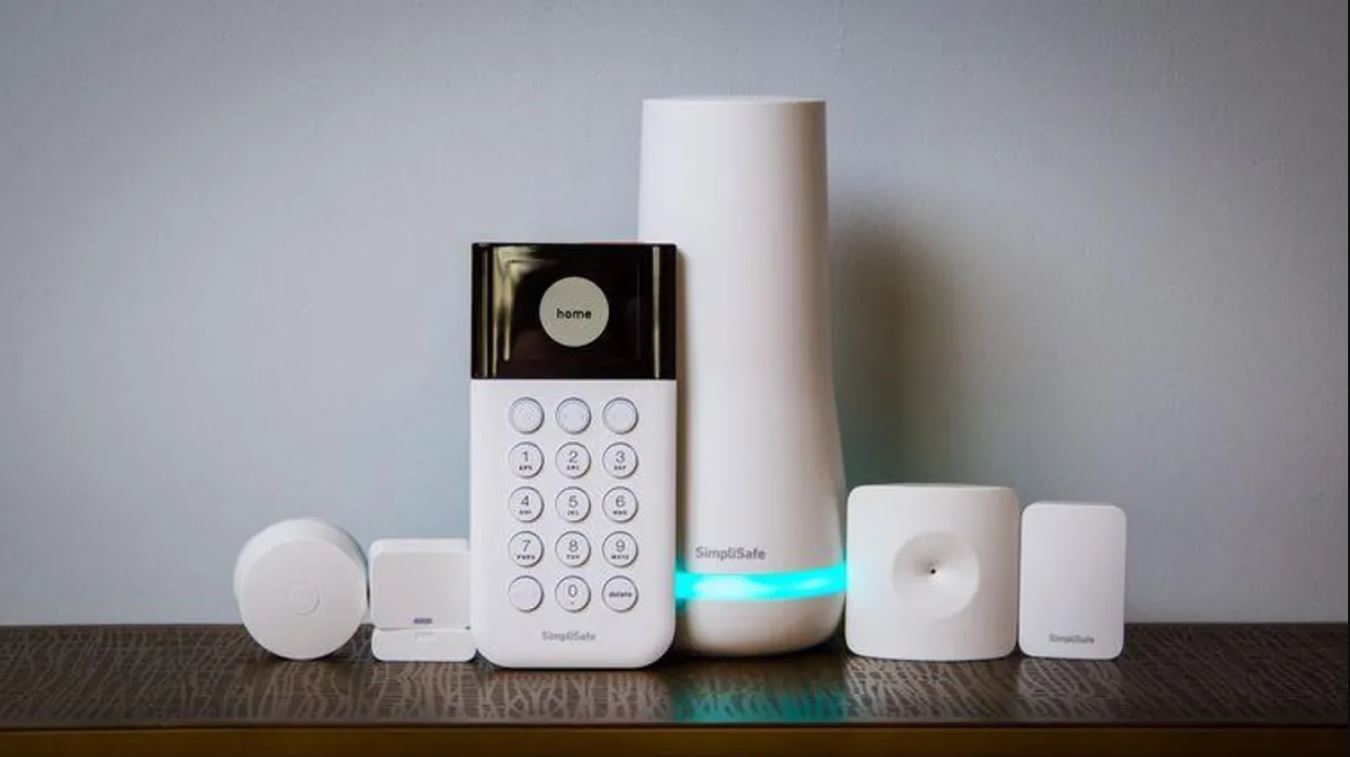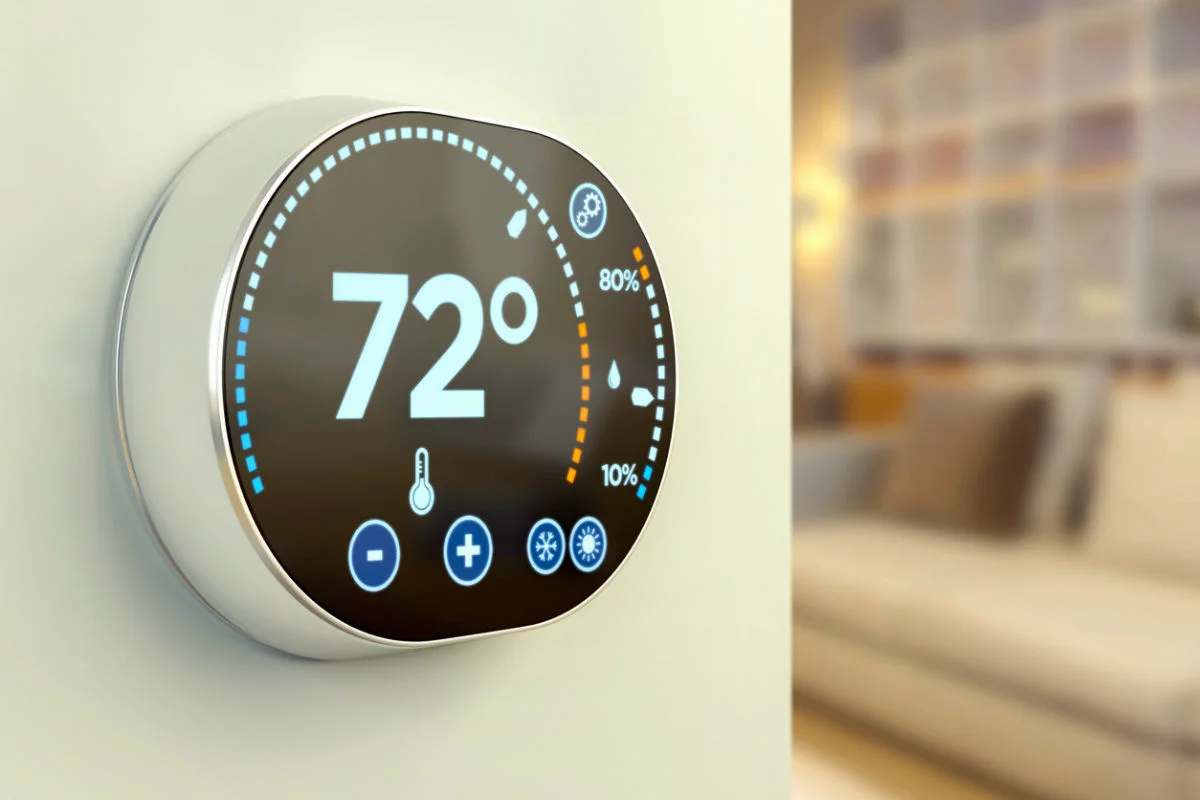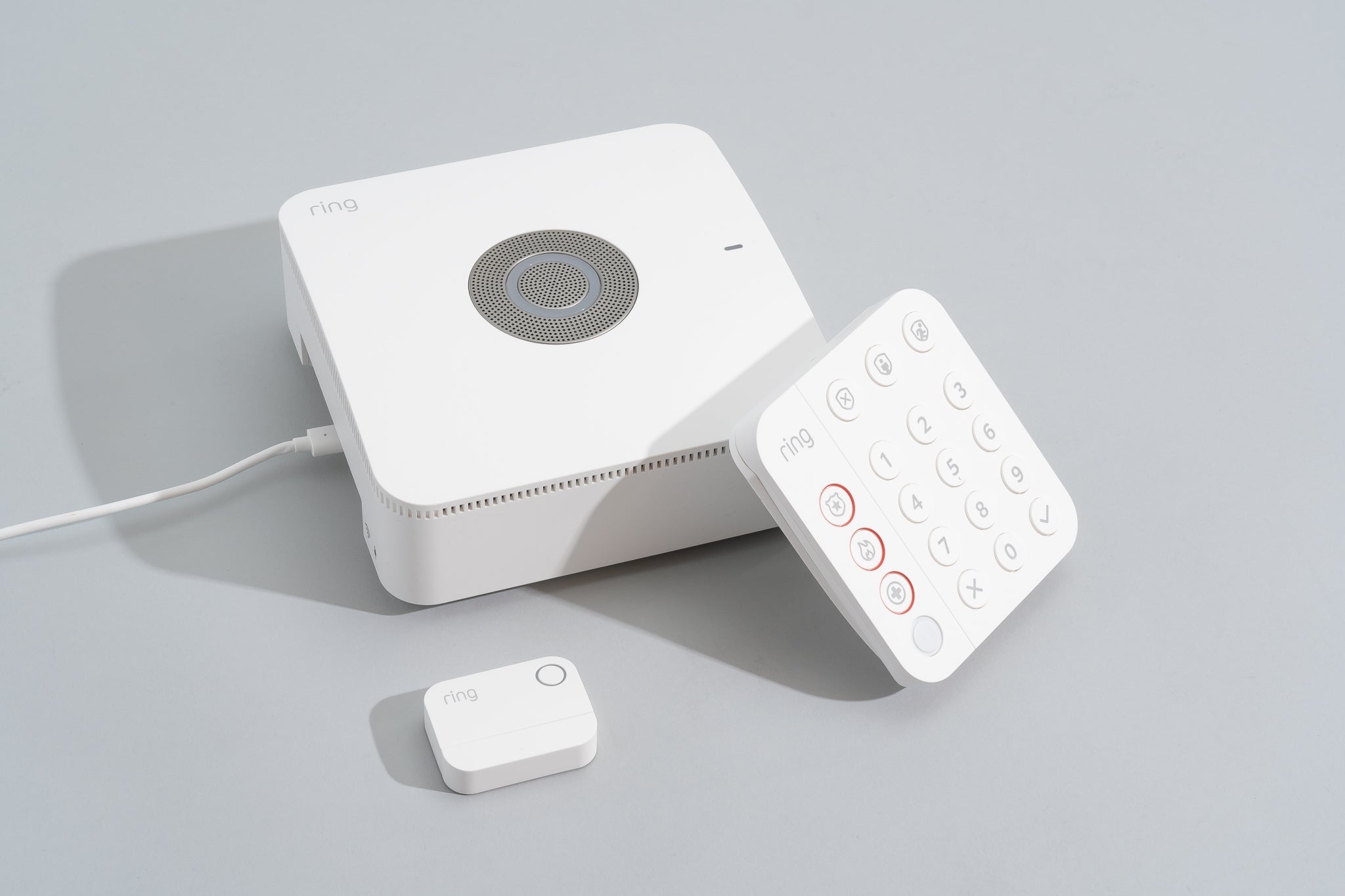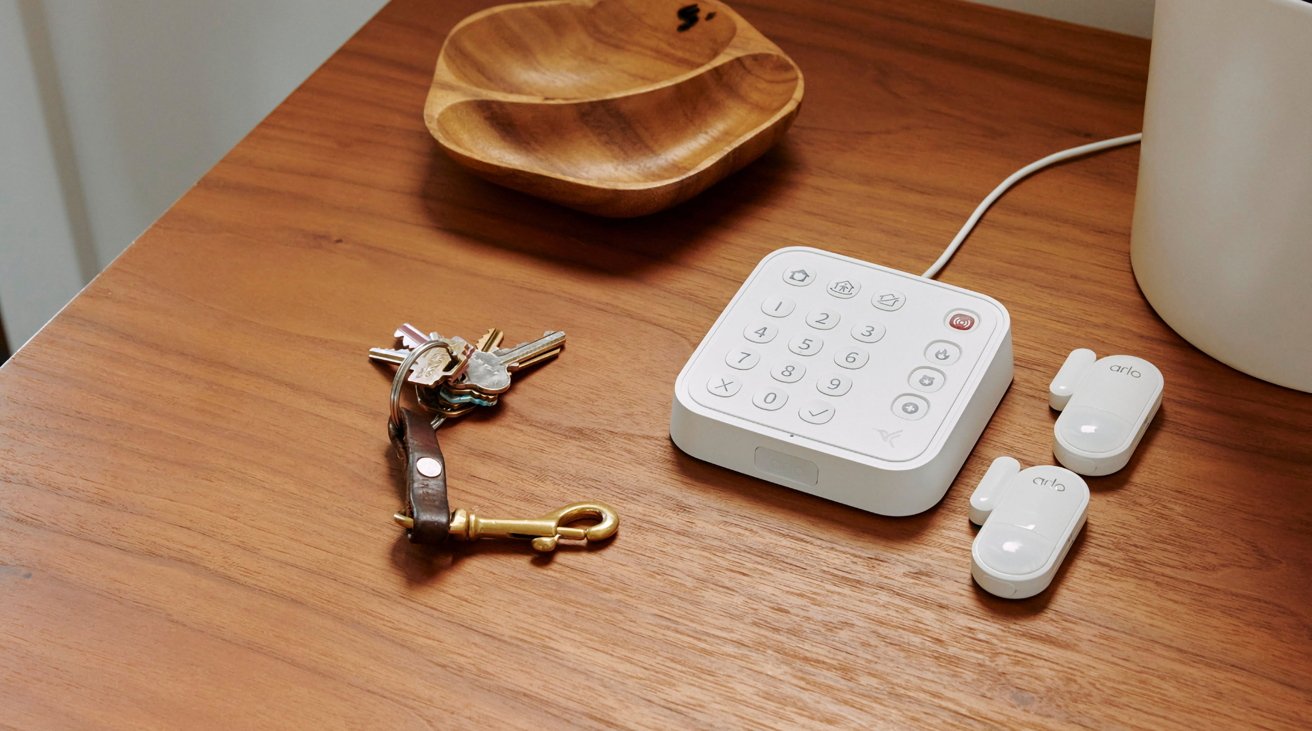Introduction
Welcome to the world of DIY home security systems! In today’s fast-paced world, the need for innovative, reliable, and affordable security solutions is paramount. With the rise in crime rates and the increasing demand for peace of mind, more and more homeowners are turning to DIY options for safeguarding their properties.
DIY home security systems provide a cost-effective and flexible alternative to traditional professionally installed systems. They empower homeowners to take matters into their own hands and customize security measures according to their specific requirements. From smart cameras and motion sensors to door/window alarms and smartphone integration, DIY systems offer a wide range of features and functionalities that can be tailored to ensure comprehensive protection for your home.
But what makes DIY home security systems so appealing? One of the primary benefits is the cost savings. By eliminating installation fees and ongoing monitoring expenses, DIY systems allow homeowners to allocate their budgets more wisely. Additionally, the ease of installation and setup makes these systems accessible to individuals with little to no technical expertise.
Choosing the right DIY home security system may seem daunting, but understanding your priorities and assessing your home’s security needs will help you make an informed decision. Factors such as budget, desired features, and compatibility with other smart devices should be taken into consideration.
In this article, we will explore the benefits of DIY home security systems and provide a comprehensive list of the top 5 options available on the market. We will delve into the features and pros and cons of each system to help you make an educated choice. Furthermore, we will guide you through the process of DIY installation, offering valuable tips and insights.
So, whether you’re looking to enhance your home’s security or simply add an extra layer of protection, join us on this journey to discover the best DIY home security systems and create a safe haven for you and your loved ones.
Benefits of DIY Home Security Systems
DIY home security systems offer a multitude of advantages that make them an attractive choice for homeowners. Let’s explore the key benefits:
- Cost Savings: One of the biggest advantages of DIY home security systems is the cost savings. Traditional professionally installed systems often come with high upfront costs and monthly monitoring fees. With DIY systems, you eliminate the need to pay for professional installation and can select affordable equipment options that fit your budget.
- Flexibility and Customization: DIY home security systems allow you to have complete control over the design and customization of your security setup. You can choose the specific devices and components that best suit your needs and preferences. From cameras and sensors to smart locks and alarms, you can tailor the system to fit the unique layout and requirements of your home.
- Easy Installation: DIY home security systems are designed with user-friendly installation in mind. Most systems come with detailed guides and step-by-step instructions, making it easy for even the least tech-savvy individuals to set up the system themselves. This eliminates the need to schedule appointments and wait for professional installers, saving you time and hassle.
- Remote Access and Control: With DIY systems, you can easily monitor and control your home security from anywhere using your smartphone or computer. Whether you’re at work, on vacation, or simply running errands, you can check live feeds from your cameras, receive instant notifications of any suspicious activities, and even arm or disarm your system remotely.
- Expandability: DIY home security systems are highly expandable, allowing you to add more devices and sensors as your security needs evolve. This flexibility is especially advantageous if you have a growing family or if you decide to expand the size of your home. You can easily integrate new components into your existing system without any significant disruptions or extra costs.
By opting for a DIY home security system, you can enjoy the benefits of a personalized and cost-effective solution that meets your specific security requirements. With the flexibility to customize, easy installation process, and remote access capabilities, you gain peace of mind knowing that you have control over the safety of your home and loved ones.
Factors to Consider When Choosing a DIY Home Security System
When it comes to selecting a DIY home security system, it’s important to consider several factors to ensure you make the right choice for your home and lifestyle. Let’s explore some key factors you should keep in mind:
- Security Needs: Assess your specific security needs and determine what level of protection you require. Consider factors such as the size of your home, the number of entry points, and the surrounding neighborhood. This will help you choose a system that provides adequate coverage and meets your specific requirements.
- Features: Look for the features that matter most to you. Some common features include motion sensors, door/window sensors, surveillance cameras, alarms, and smartphone integration. Consider which features are essential for your peace of mind and if any additional features, such as smart home integration, are important to you.
- Budget: Establish a budget for your DIY home security system. Determine how much you are willing to spend on equipment, monitoring services (if applicable), and any additional accessories. It’s important to find a balance between affordability and functionality to ensure you get the best value for your investment.
- Installation: Consider your level of comfort with installing and setting up the system. Some DIY systems are designed for simple self-installation, while others may require more technical knowledge. Make sure the installation process aligns with your capabilities and that the system includes user-friendly instructions.
- Monitoring Options: Decide whether you want professional monitoring or if self-monitoring is sufficient for your needs. Professional monitoring involves a monthly fee and provides round-the-clock monitoring by a dedicated team. Self-monitoring relies on notifications sent directly to your smartphone. Evaluate the pros and cons of each option and choose what suits you best.
- Scalability: Consider the future expansion of your security system. If you anticipate adding more devices or sensors in the future, ensure that the system you select is easily expandable. Look for systems that offer compatibility with additional components so that you can seamlessly enhance your security as needed.
By carefully considering these factors, you can make a well-informed decision when choosing a DIY home security system. Remember to prioritize your security needs, evaluate the features that matter to you, and stay within your budget. Selecting the right system will provide you with the peace of mind and protection you desire for your home and loved ones.
Top 5 DIY Home Security Systems for Every Budget
With a wide range of options available, it can be overwhelming to choose the best DIY home security system for your specific needs and budget. To help narrow down your choices, here are the top 5 DIY home security systems that offer excellent features and value:
-
System A
System A is a budget-friendly option that doesn’t compromise on functionality. It offers essential features such as door/window sensors, motion detectors, and a smartphone app for remote access. This system provides reliable security at an affordable price point for those on a tight budget.
Pros: Affordable, easy installation, smartphone integration.
Cons: Limited camera options, basic features.
-
System B
System B is a mid-range DIY security system that packs a punch. With advanced features like HD cameras, two-way audio, and compatibility with smart home devices, it provides comprehensive security coverage. This system is suitable for those seeking more advanced functionalities without breaking the bank.
Pros: HD cameras, smart home integration, expandable.
Cons: Slightly higher upfront cost, may require technical knowledge for setup.
-
System C
System C is a premium DIY home security system that offers cutting-edge technology and top-notch protection. It includes features like facial recognition, advanced motion detection, and 24/7 professional monitoring. This system is ideal for homeowners who prioritize advanced security features and are willing to invest in a comprehensive solution.
Pros: Advanced features, professional monitoring, high-quality cameras.
Cons: Higher price point, ongoing monitoring fees.
-
System D
System D is a versatile DIY security system that caters to different budgets. It offers a range of packages with varying levels of equipment and features. Whether you’re looking for basic security or comprehensive protection, System D has options to fit your needs. This system provides flexibility and scalability for homeowners who want to customize their security solution.
Pros: Flexible packages, customizable features, affordable options.
Cons: Some advanced features may require additional investment.
-
System E
System E is a DIY home security system that focuses on simplicity and user-friendly operation. It offers easy installation, intuitive mobile app control, and basic features like door/window sensors and motion detection. This system is perfect for homeowners who prefer a straightforward setup and do not require advanced functionalities.
Pros: Simple installation, user-friendly, cost-effective.
Cons: Limited features, may not be suitable for larger properties.
These top 5 DIY home security systems provide a range of options for every budget. Consider your specific needs, preferences, and budget constraints to choose the system that best fits your requirements. Remember to compare features, read customer reviews, and evaluate the scalability and compatibility of each system before making your final decision. By investing in a reliable DIY home security system, you can have peace of mind knowing that your home and loved ones are secure.
System A: Features, Pros, and Cons
System A is an affordable DIY home security system that offers essential features for basic home protection. It aims to provide reliable security without breaking the bank. Here are the features, pros, and cons of System A:
Features:
- Door/Window Sensors: System A includes door/window sensors to detect any unauthorized entry.
- Motion Detectors: The system is equipped with motion detectors that can detect any movement within its range.
- Smartphone Integration: System A provides a smartphone app that allows users to monitor and control their security system remotely.
Pros:
- Affordable: System A offers a budget-friendly option, making it accessible to homeowners on a tight budget.
- Easy Installation: The system is designed for easy installation, allowing users to set it up themselves without professional assistance.
- Smartphone Integration: With the smartphone app, users can conveniently monitor their home security from anywhere.
Cons:
- Limited Camera Options: System A might have limited camera options compared to more advanced systems on the market.
- Basic Features: It focuses on providing essential features, which may not suffice for homeowners seeking more advanced functionalities.
System A is an ideal choice for homeowners who are on a tight budget and looking for a simple yet effective DIY home security system. Its affordable price point and easy installation process make it accessible to anyone. While the system may have limited camera options and basic features, it still provides essential security components like door/window sensors and motion detectors. Additionally, the smartphone integration feature allows users to conveniently monitor and control their security system remotely.
Consider System A if you prioritize cost-effectiveness and ease of use. However, if you require more advanced features or a wider range of camera options, you may want to explore other options on the market.
System B: Features, Pros, and Cons
System B is a mid-range DIY home security system that offers a range of features to enhance your home’s security. It strikes a balance between price and functionality, making it a popular choice among homeowners. Let’s take a closer look at the features, pros, and cons of System B:
Features:
- HD Cameras: System B is equipped with high-definition cameras, providing crystal-clear video footage for enhanced monitoring.
- Smart Home Integration: The system is compatible with various smart home devices, allowing integration and control through a single platform.
- Two-Way Audio: System B offers two-way audio communication, allowing you to communicate with visitors or deter potential intruders.
Pros:
- HD Cameras: The high-definition cameras of System B ensure clear surveillance footage for better identification and monitoring.
- Smart Home Integration: With compatibility for smart home devices, you can create a seamless and integrated home automation and security system.
- Expandable: System B provides flexibility for expansion, allowing you to add additional devices and sensors as your security needs evolve.
Cons:
- Slightly Higher Upfront Cost: System B may come with a slightly higher upfront cost compared to entry-level options, due to its more advanced features.
- Technical Knowledge Required: Setting up System B may require a certain level of technical knowledge compared to simpler DIY systems.
System B is an excellent choice for homeowners looking to enhance their security with more advanced features. The high-definition cameras ensure clear monitoring footage, while smart home integration allows for seamless control and automation. The ability to expand the system with additional devices and sensors provides scalability to meet changing security needs.
Keep in mind that System B may come with a slightly higher upfront cost compared to basic DIY systems. Additionally, setting up the system may require a certain level of technical knowledge. However, the benefits of enhanced functionality and flexibility make it a worthwhile investment for homeowners seeking a more comprehensive DIY home security solution.
If you value high-quality video surveillance, smart home integration, and the ability to expand your security system, System B is an excellent choice to consider.
System C: Features, Pros, and Cons
System C is a premium DIY home security system designed to provide advanced features and top-notch protection. It offers cutting-edge technology and comprehensive security solutions for homeowners who prioritize enhanced security. Let’s explore the features, pros, and cons of System C:
Features:
- Facial Recognition: System C utilizes facial recognition technology to identify and differentiate between known individuals and potential intruders.
- Advanced Motion Detection: The system incorporates advanced motion sensors that can detect and distinguish between humans, pets, and other objects.
- 24/7 Professional Monitoring: System C can be linked to a professional monitoring service for round-the-clock surveillance and immediate response to any security breaches.
Pros:
- Advanced Features: System C offers advanced features such as facial recognition and advanced motion detection for precise monitoring and enhanced security.
- Professional Monitoring: The option for 24/7 professional monitoring provides an extra layer of security and peace of mind.
- High-Quality Cameras: System C includes high-resolution cameras that capture sharp and detailed video footage for improved identification.
Cons:
- Higher Price Point: System C falls into the premium price range, making it a more significant investment compared to other DIY home security systems.
- Ongoing Monitoring Fees: The 24/7 professional monitoring service may involve additional monthly or yearly fees.
System C is an ideal option for homeowners who prioritize advanced features and are willing to invest in a comprehensive DIY home security solution. With facial recognition technology, advanced motion detection, and the option for 24/7 professional monitoring, System C provides a high level of reliability and security.
It’s important to note that System C comes at a higher price point compared to other DIY systems, and the professional monitoring service may incur ongoing fees. However, the advanced features, high-quality cameras, and extra layer of security justify the investment for those seeking top-of-the-line protection for their home and loved ones.
If you value cutting-edge technology, precise monitoring, and the peace of mind that comes with professional monitoring, System C offers a comprehensive solution tailored to your security needs.
System D: Features, Pros, and Cons
System D is a versatile DIY home security system that offers various packages to suit different budgets and security needs. It provides flexibility and scalability, allowing homeowners to customize their security setup. Let’s explore the features, pros, and cons of System D:
Features:
- Flexible Packages: System D offers different packages with varying levels of equipment and features, allowing users to choose the one that best fits their needs.
- Customizable Features: The system allows homeowners to select additional devices and sensors to enhance their security based on their specific requirements.
- Affordable Options: System D provides affordable options for those looking for cost-effective DIY home security solutions.
Pros:
- Flexible Packages: System D’s flexible packages provide options for homeowners to tailor their security system to their specific needs and budget.
- Customizable Features: The ability to add additional devices and sensors allows for a personalized and expandable security solution.
- Affordable Options: System D offers cost-effective options, making it accessible to homeowners with varying budgets.
Cons:
- Additional Investment: While the base package may be affordable, some advanced features or additional devices may require additional investment.
- Advanced Features Limited: System D’s base packages may have limited advanced features compared to higher-tier systems.
System D is an excellent choice for homeowners who want flexibility and customization options for their DIY home security system. With various packages available, homeowners can select the one that best matches their security needs and budget. The ability to add additional devices and sensors provides scalability and allows for a personalized security solution.
It’s important to note that while System D offers affordable options, homeowners may need to invest extra in advanced features or additional devices. Additionally, the base packages may not include the same level of advanced features found in higher-tier systems. However, the flexibility, customization options, and affordability make System D an appealing choice for those looking for a tailored security solution.
If you value flexibility, scalability, and the ability to customize your home security system according to your needs and budget, System D is a great option to consider.
System E: Features, Pros, and Cons
System E is a DIY home security system that focuses on simplicity and user-friendly operation. It offers easy installation, intuitive mobile app control, and basic features to ensure the safety of your home. Let’s explore the features, pros, and cons of System E:
Features:
- Simple Installation: System E is designed for easy installation, allowing homeowners to set it up without professional assistance.
- Intuitive Mobile App Control: The system provides a user-friendly mobile app that allows convenient monitoring and control of the security system.
- Basic Features: System E offers essential features such as door/window sensors and motion detection to keep your home secure.
Pros:
- Simple Installation: The straightforward installation process makes System E accessible to homeowners with limited technical knowledge or experience.
- User-Friendly: The intuitive mobile app control ensures easy monitoring and control of the security system, even for those unfamiliar with complex systems.
- Cost-Effective: System E provides a cost-effective solution for basic home security needs.
Cons:
- Limited Features: System E focuses on providing basic features and may not offer advanced capabilities found in higher-tier systems.
- Not Suitable for Larger Properties: Due to its simplified nature, System E may not be suitable for larger properties that require more comprehensive security coverage.
System E is a perfect choice for homeowners who prefer a straightforward and user-friendly DIY home security system. The easy installation process and intuitive mobile app control make it accessible to individuals with limited technical knowledge. It provides basic features like door/window sensors and motion detection to ensure the safety of your home without unnecessary complexity.
While System E may lack advanced features found in higher-tier systems, its cost-effectiveness and simplicity make it an excellent option for homeowners prioritizing ease of use and affordability. However, for larger properties or those seeking more comprehensive security coverage, other systems with more advanced capabilities may be more suitable.
If you value simplicity, easy installation, and cost-effectiveness for your home security needs, System E offers a practical and user-friendly solution.
DIY Installation Guide for Home Security Systems
Installing a DIY home security system can seem like a daunting task, but with the right guidance, it can be a straightforward and rewarding process. This DIY installation guide will walk you through the steps to set up your home security system:
Step 1: Plan the Layout: Start by planning the layout of your security system. Identify the areas of your home that require coverage and determine where to place cameras, sensors, and other devices. Consider the entry points, high-risk areas, and any specific security concerns.
Step 2: Gather the Equipment: Ensure that you have all the necessary equipment for your DIY home security system. This may include cameras, sensors, control panel, base station, power cables, and other components. Double-check that you have all the required tools as well.
Step 3: Install the Cameras and Sensors: Begin by installing the cameras in strategic locations, such as near entry points or common areas. Mount them securely to ensure optimal coverage. Install the door/window sensors at all entry points. Follow the manufacturer’s instructions for each device to ensure proper installation.
Step 4: Connect the Control Panel: Connect the control panel or base station to a power source and your home’s Wi-Fi network (if applicable). This will enable communication between the various components of your security system.
Step 5: Set up the Mobile App: If your DIY home security system includes a mobile app, download and install it on your smartphone or tablet. Follow the app’s instructions to connect it to your system and customize settings such as notifications and remote access.
Step 6: Test the System: After installation, thoroughly test your home security system. Activate each sensor to check if the control panel receives the signal correctly. Test the cameras to ensure they capture clear footage. Verify that the mobile app functions properly and that you can monitor and control your system remotely.
Step 7: Extra Tips: Consider these additional tips for a successful DIY installation:
- Read the manufacturer’s instructions carefully before installation to avoid any mistakes or damage.
- Place cameras and sensors at optimal positions to maximize coverage and minimize blind spots.
- Ensure that all components are securely mounted and protected from tampering.
- Regularly test and maintain your DIY home security system to ensure optimal performance.
Remember that every DIY home security system is unique, so it’s essential to refer to the specific instructions provided by the manufacturer. If you encounter any difficulties during the installation process, consult the manufacturer’s support or seek assistance from professional installers.
By following this DIY installation guide, you can set up your home security system with confidence. Enjoy the peace of mind that comes with protecting your home and loved ones with a system tailored to your needs and installed with your own hands.
Conclusion
Choosing the right DIY home security system is a crucial step in safeguarding your home and providing peace of mind. Whether you’re looking for a budget-friendly option or a premium system with advanced features, there are DIY solutions available to suit every need and budget.
We explored the benefits of DIY home security systems, including the cost savings, flexibility, and ease of installation that they offer. By taking matters into your own hands, you can customize your security setup and even integrate it with other smart devices for enhanced convenience.
Consider the factors discussed when choosing a DIY home security system, such as your security needs, desired features, budget, and scalability. This will help you make an informed decision and select the system that best fits your requirements.
We introduced the top 5 DIY home security systems, each with unique features, pros, and cons. System A provides an affordable option, while System B offers more advanced features. System C is a premium choice for those seeking cutting-edge technology, while System D offers flexibility and customization options. System E focuses on simplicity and user-friendly operation.
We also provided a DIY installation guide to help you set up your home security system with confidence. From planning the layout to testing each component, following the proper installation process is crucial for effective security coverage.
Remember, security is an ongoing commitment. Regularly maintain and test your home security system to ensure it’s functioning optimally. Stay updated with the latest technology and trends in the market to ensure your security system continues to meet your evolving needs.
With a well-chosen DIY home security system in place, you can rest assured that your home is protected. Enjoy the peace of mind and added layer of security that comes with taking control of your home’s safety.







